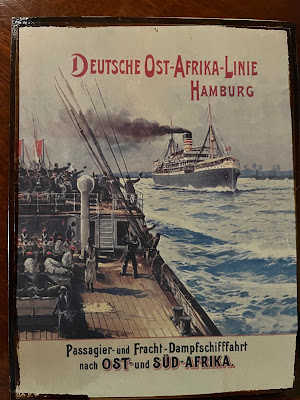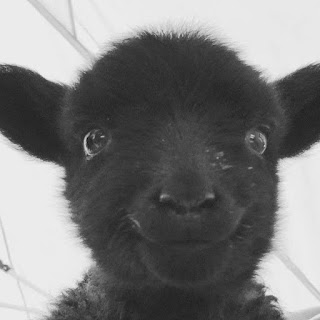 |
| Poppy wreaths laid at the Australian War Memorial in London on Anzac Day |
Craig every second Tuesday
Kia ora and gidday everyone,
In the past week a rather significant day for Australians and New Zealanders has passed by again. 25 April may just be a date on the calendar for most countries, but down in New Zealand and Australia, and for others all around the world who have links to our two nations (including Turkey), it is a very special, and sombre day; ANZAC Day. A public holiday, but more akin to one like Memorial Day in the United States than its more festive holiday brethren.
Anzac Day is a day when Aussies and Kiwis pause and remember the soldiers, sailors, and others who have served (and are still serving) our countries in wars and conflicts all over the world. 109 years ago, our two nations first fought side by side under the Australian and New Zealand Army Corps (ANZAC) banner – our soldiers landing together at dawn on a desolate beach on the Gallipoli peninsula in Turkey. It was a military bungle by the British commanders - but the attitudes, actions, and courage of the Australian and New Zealand soldiers both at Gallipoli and over the many battles and years since, stoked a burgeoning sense of independent identity and nationhood.
Despite being about as far away from the main First World War conflict as you could be, more than 100,000 New Zealand troops and nurses served overseas during the First World War, from a population of just over one million. 42% of men of military age served. The losses were huge. You've only got to drive around New Zealand and spy the war memorials in various rural towns, where there are dozens of names listed even from tiny farming communities, to realise the impact the First and Second World Wars had on a couple of generations. Service, sacrifice.
Over the past century, Australia and New Zealand have contributed greatly on the world stage in many ways and in many diverse areas, generally 'punching far above our weight' given our geographic isolation and small populations - and in some ways this can be traced back to the values associated with 'the ANZAC tradition'.
Wreaths at New Zealand war memorial
in London. Green one is Royal Family
I've been thinking a lot about Anzac Day recently, and what it means. It's thirteen years since I made the pilgrimage to Gallipoli myself, camping out overnight with hundreds of fellow Kiwis and Aussies by the beach where the Anzacs landed in 1915, waking for dawn service then hiking up the steep cliffs for morning services at Lone Pine and Chunuk Bair. You can read more about my thoughts on that experience at a prior Murder is Everywhere post. A couple of years ago I attended an Anzac Day ceremony in my hometown of Richmond, Nelson in the top of the South Island of New Zealand. The place where I used to march in Anzac Day parades as a little kid in the Boy Scouts, joining the then-current military personnel and the veterans wearing their medals.
That April we were back visiting family, for the first time in three-plus years because of the pandemic (we usually go back every year). Some significant things have changed for me since, and I've learned more personally about loss, and grief.
This year I toyed with attending the dawn service in London for the first time. It's held each year by the Australian and New Zealand war memorials near Hyde Park corner. I even had got Miss Nine and myself some poppies to wear (they're usually sold here in the UK around November, for Remembrance Day, whereas in ANZ they're an April thing). I'd been thinking about nationhood, military service, and more quite a bit recently as I was also writing my first large feature article for a big British newspaper (having had 1,000+ new stories, columns, and features published in other print magazines and newspapers in several countries). That feature combined crime writing and wartime remembrances; an interview with Māori filmmaker and novelist Michael Bennett (Better the Blood, The Gone, etc) about his father, Ted, who was a rare indigenous fighter pilot in the Second World War, and one of seven brothers who served in the war - remarkably, all came home, including three from the famed Māori Battalion. I'd gotten to do some fascinating research and gone down a few interesting rabbit holes while writing and fact-checking the feature article - which was originally scheduled to be published on 25 April (it got bumped to a later issue by the announcement of the Theakston Old Peculier Crime Novel of the Year longlist). %20Te%20Keu%20Bennett,%20Flight%20Lieutenant,%20485%20Squadron.jpg)
Flight Lieutenant Edward Te Keu
Bennett, a rare indigenous pilot
So Anzac Day had been on my mind even more than usual.
To attend the dawn service in central London, it was going to be a 3am wakeup in South London to get a night bus into the city in time to make the entry time for the service - doable if tricky on a school day. Unfortunately a very late night beforehand for Miss Nine meant I couldn't in good conscience drag her out of bed so early, even for something as significant as Anzac Day. Especially when it's not a public holiday in the UK, so she'd have to go to school afterward. Perhaps in a couple of years, when it's on a Saturday here. After dropping her at school, though, I did head into town to pay my own respects at the war memorials. It was interesting being there, with the poppy wreaths placed by the Royal Family, the New Zealand and Australian governments, each branch of the military, and more. Tourists were wandering around as they usually do in London, and some wondered about why there were so many big wreaths at those memorials today. So I ended up chatting with some American tourists, and German tourists, and others, about Anzac Day.
.jpg) |
| My dawn view over Anzac Cove on 25 April 2011 |
After that I strolled down Piccadilly and visited several bookshops, before getting back to my laptop for some work. On the other side of the world, my compatriots had been attending services and spending a public holiday with family and friends. My Anzac Day was a little different, but I was glad I took the time this year to pause for a while, to remember and reflect. I'll leave you with the words of the Anzac dedication, read out at every service:
“They shall grow not old, as we that are left grow old,Age shall not weary them nor the years condemn.At the going down of the sun and in the morning,We will remember them.”
 |
| The native New Zealand wood pigeon (kereru) is fond of miro berries |















































